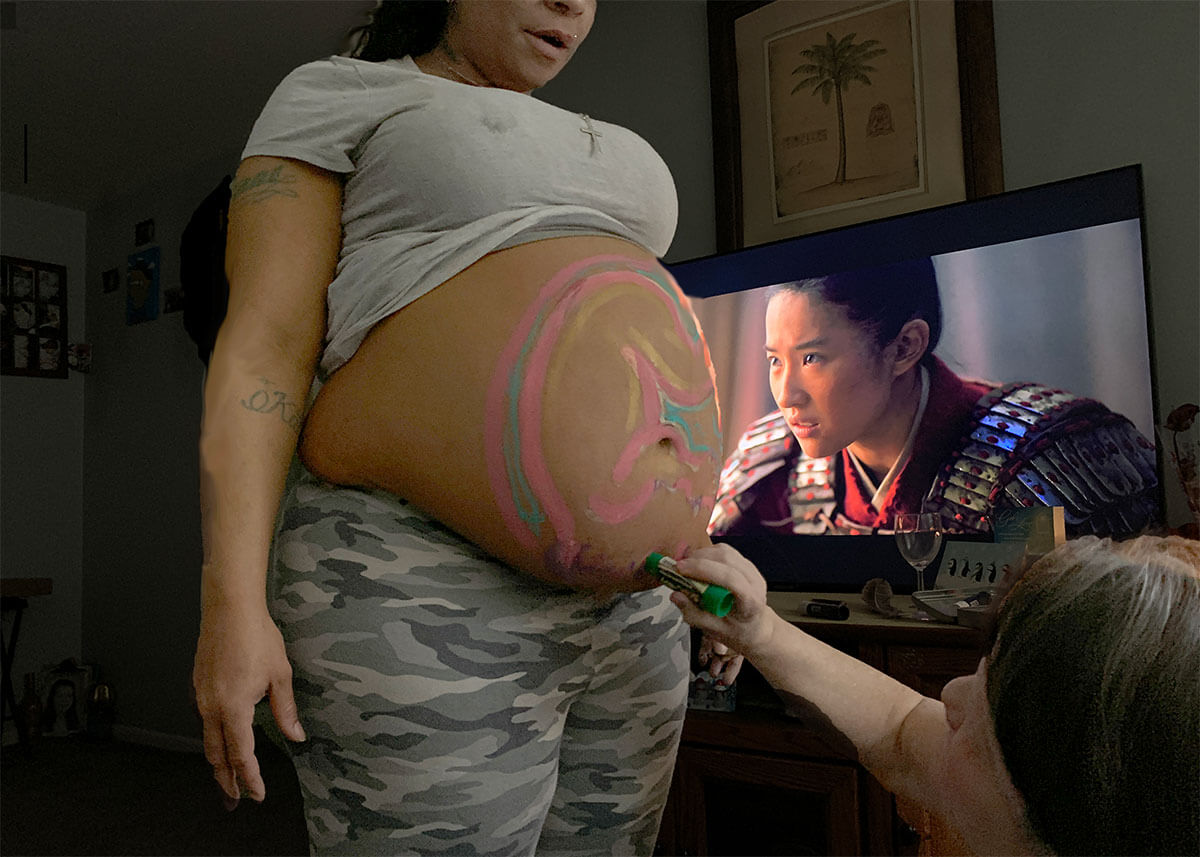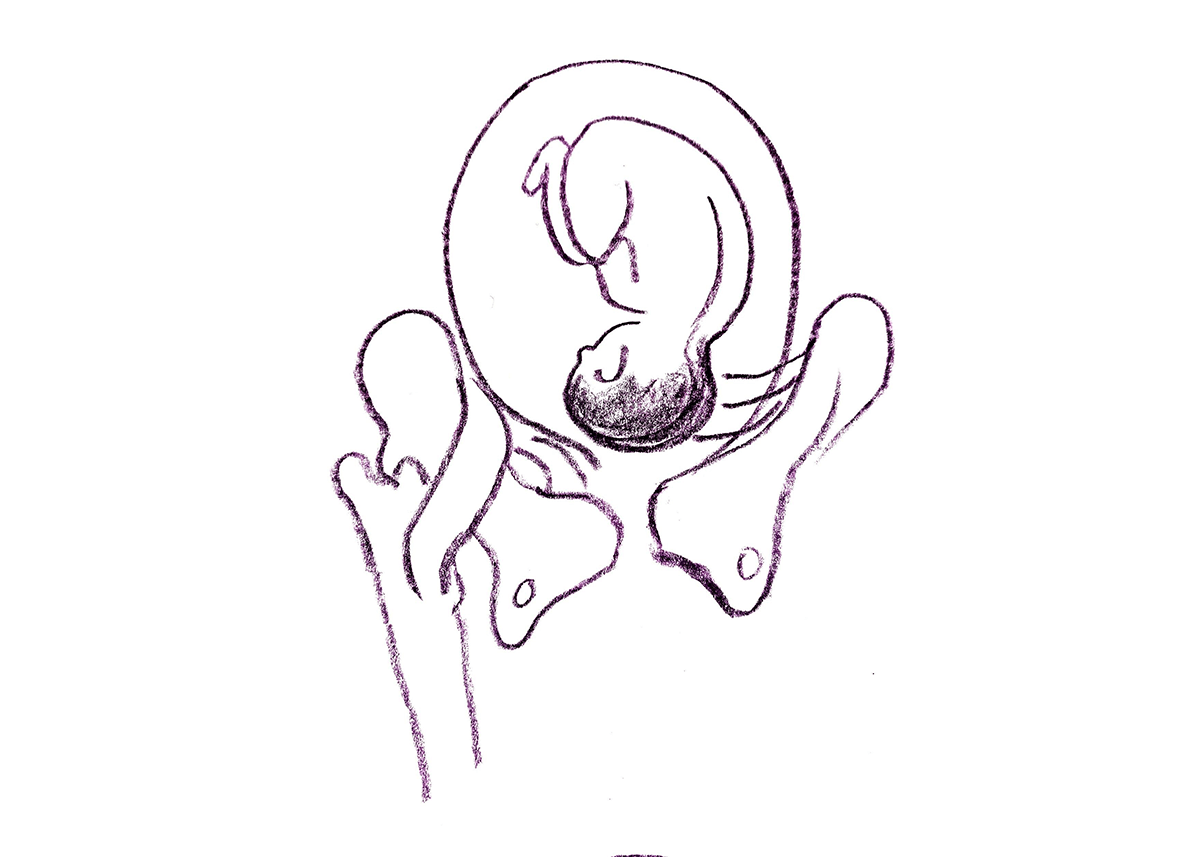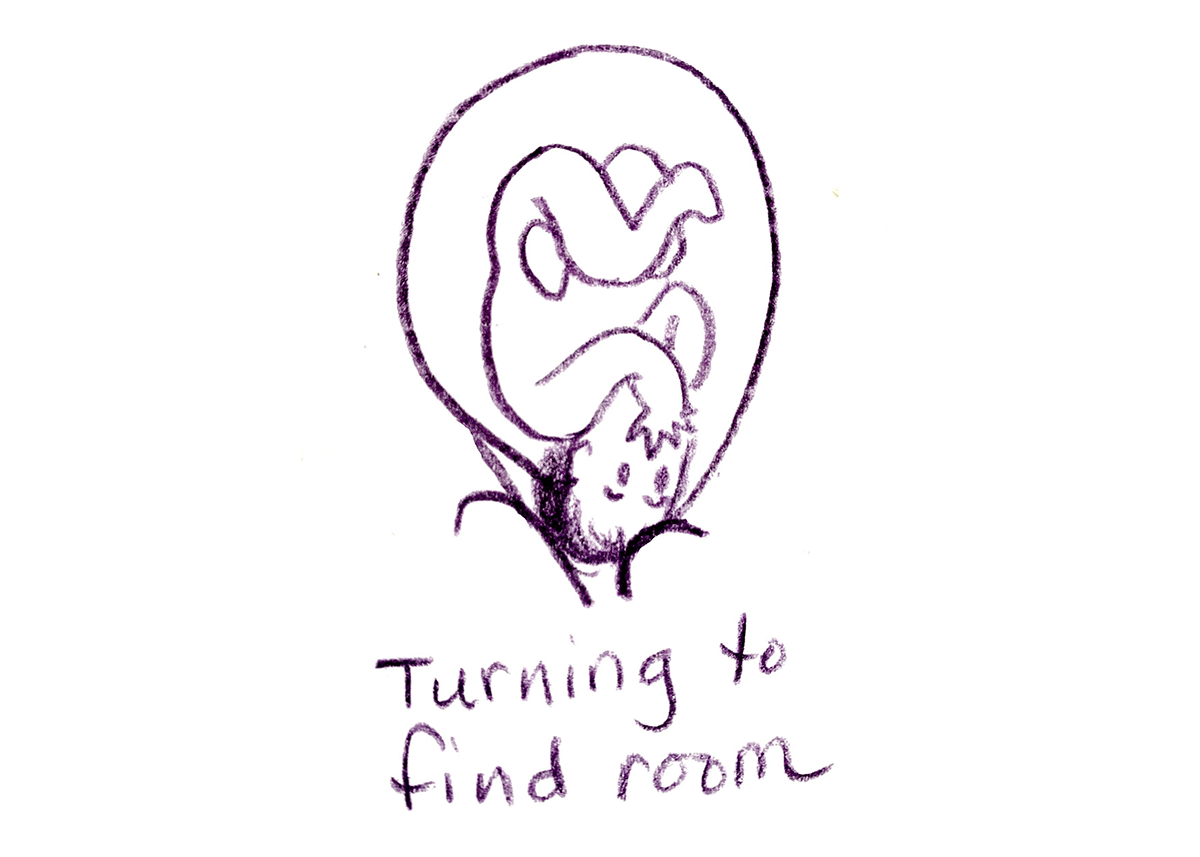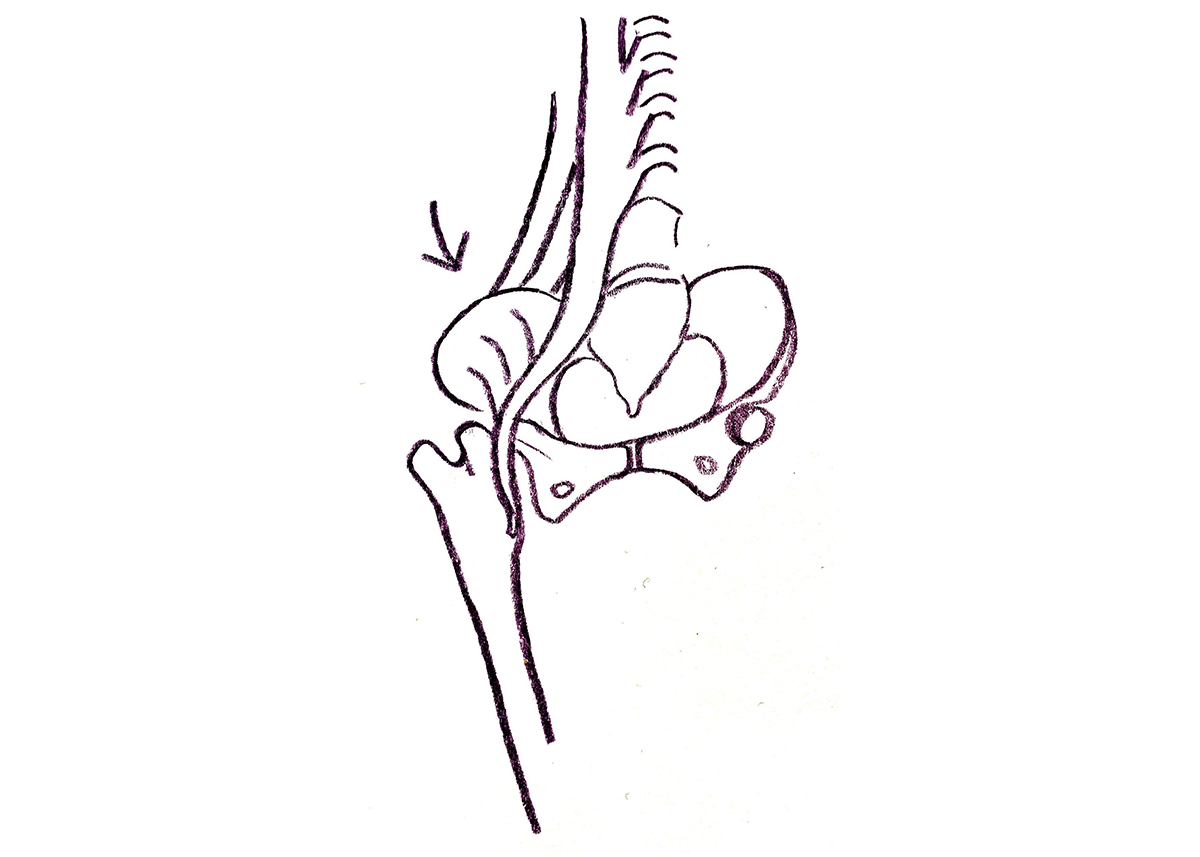
Pictured: Gail Tully belly painting her goddaughter. “Painting the baby in the belly impresses even the warrior with the wonder of pregnancy.”
Excerpt from the March 2021 letter to our community:
Dear Community,
Spinning Babies® brings nuances to light in how we think about birth preparation. We offer enough simplicity for parents to engage in a process with their own bodies. The comfort gained so quickly adds confidence to their ability to give birth. Spinning Babies® also significantly shifts how a provider thinks about birth. Many experienced midwives and nurses say, “I see birth with new eyes!” and similar exclamations of an unfolding paradigm.
We are not machines to be oiled. We are living beings, with emotion, history, and adaptive aspects to our anatomy! Living in gravity grounds us but it is the fire within, our living determination, that moves us into action. Movement keeps us in ideal function. Good eating, plenty of pure water, vitamins, and minerals including salt-to-taste, protein, and dark greens are vital. But movement is often misunderstood. Suppleness will provide advantages that strength doesn’t allow for. Exploring the physiology of birth is being in movement with birth.
We seek to awaken each birthing parent to the power within – their own physiology and the state in which they begin their experience.
I hope to be in movement with you, my community!
With visions of the new paradigm,
Gail Tully
Founder of Spinning Babies®
Why did the baby move out of a good position? The uterus is not a water balloon but we tend to think it is shaped like one. So if the baby is in position when the head is leaning 3/4th of the way toward the bottom why wouldn’t the baby remain in that position when descending to the cervix?
Let’s recall the uterine ligaments. The broad, cardinal (transverse) and uterosacral ligaments attach to the lower uterus along the area of the cervix, give or take some millimeters. The pelvic floor is also coming up to snuggle the lowest parts of the uterus. Once baby’s head comes down towards the inlet, the head will interact, if you will, with these anatomy structures.
Twists and tensions in the tissues below the level of the inlet will reduce the space available near the inlet. When many structures are tight, once one is resolved another one will become the tightest of the bunch. The baby will then interact with that ligament, area of fascia, or muscle.

Baby might even move out of a flexed position on the left. In these drawings, we see the baby on the left in the first picture but as baby descends towards an unreleased tension near the cervix or pelvic floor, the baby turns posterior.
Old patterns of torsion can remain where there are so many structures while the parts of the broad and round ligaments above the brim were released with daily stretches and the basic body balancing dehttps://www.spinningbabies.com/wp-content/uploads/2019/10/sample3-1.pngd in our foundational level of learning offered on our site and workshop.

When a baby leaves a position that is considered good or optimal, they will slip right back to it once the remaining anatomy is released to balance. Not too tight, not too loose, and not too twisty. Check out our Three Principles of Spinning Babies℠ page.
Help a baby move freely from the right side by freeing up the posterior muscles at the pelvic crest. Dip the hip is a gentle version of Deb Lawrence’s figure-8 hip movement. This is a manual technique for non-dancers. It starts a bit clunky until the hips warm up. Freedom in the movement means the exercise met the need it seeks to meet: suppleness in the posterior back muscles connecting to the iliac crest. Repeat several times a week in late pregnancy or try this in labor.
For dancers, the figure-8 with a hip hike releases the posterior muscles at the pelvic crest. Start slow and deliberate until the movement is smooth.

Make an impact by working with parents with the Spinning Babies® approach in pregnancy. Become a Spinning Babies® Certified Parent Educator (SpBCPE) to teach our structured Spinning Babies® Parent Class in group and one-on-one education. SpB®CPEs are listed on SpinningBabies.com, and use Spinning Babies® curriculum to teach pregnant parents. Once certified, CPEs can promote themselves and their services using the Spinning Babies name, logo, and designation on their website.
See all upcoming events on our calendar here.
One of our most beloved products, now with subtitles in English, French, and Spanish, offering expert support to reduce intervention and increase comfort throughout pregnancy and birth.